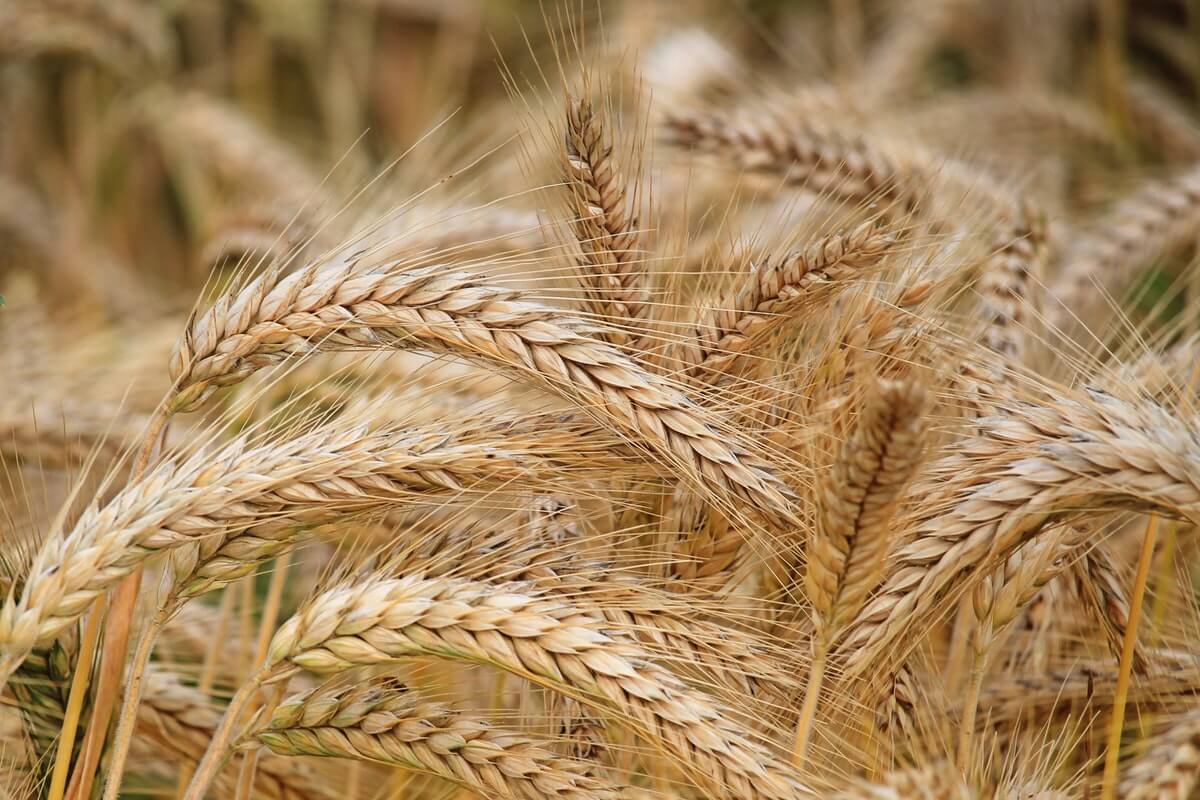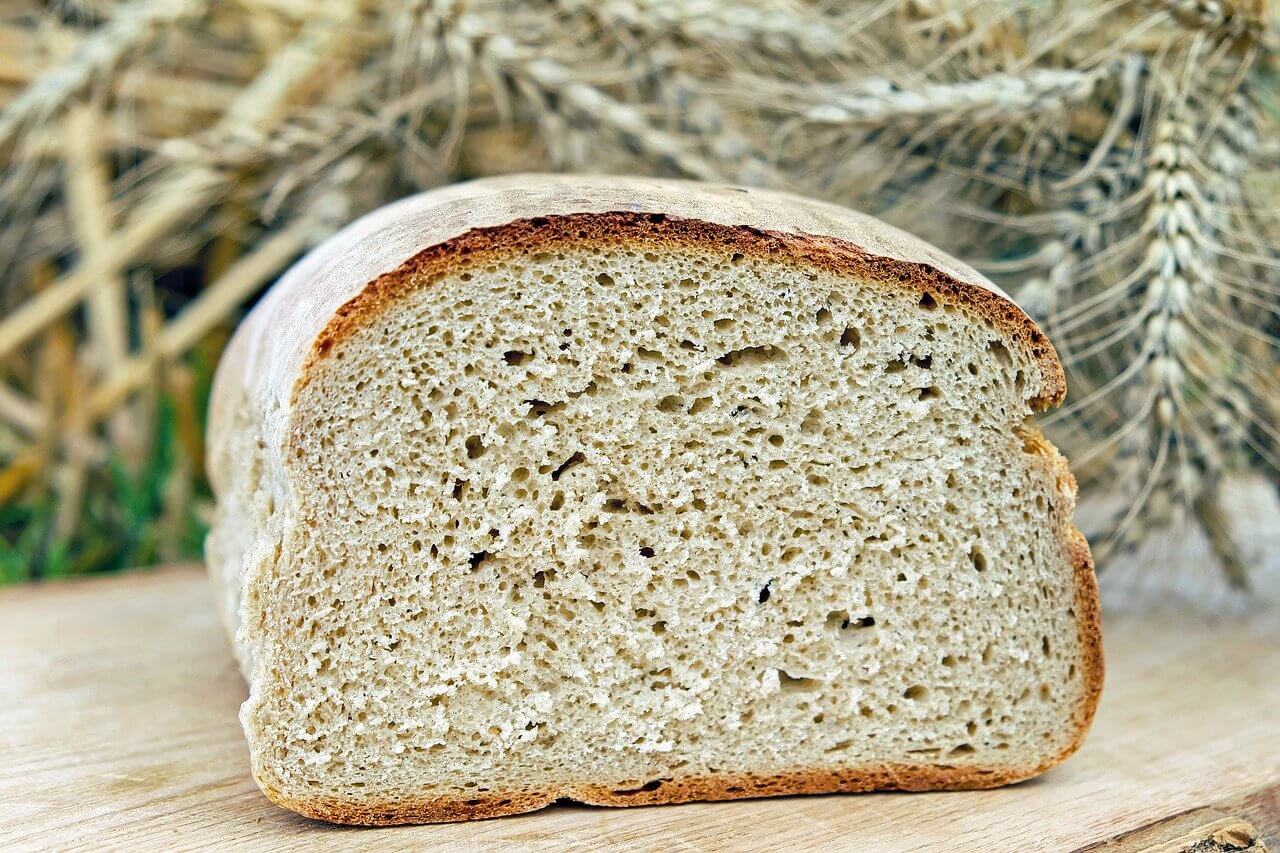Growing wheat on your homestead can provide you with higher quality flour products that you can find in any grocery store. You control the growing conditions and plant health to lead to a better end product. But, how do you turn wheat into flour that you can use to make bread? Read on to learn more on how to turn wheat into bread.
What You'll Learn Today
- Growing Wheat
- Harvesting Wheat Berries
- Milling Wheat To Flour
- Baking Bread
- Frequently Asked Questions
- How much wheat does it take to make bread?
- How much flour do you get from a pound of wheat?
- Is it cheaper to mill your own flour?
- Can you mill flour in a food processor?
- Can you save money by growing your own wheat and making your own flour?
- Is it alright to grind a large amount of wheat all at once and store the flour?
- If I can’T grow wheat at home, where can I buy whole, organic wheat berries?
- If you are shopping for wheat berries to make yeast breads, what are the most important qualities?
- How can you choose the right kind of wheat to grow for home use?
- What can you do if your area doesn’t have much rainfall or irrigation?
- Let’s Grow Bread!
Growing Wheat

The first step in growing wheat is deciding what variety you are going to grow. They all have different qualities and not all can produce high-quality bread. Here are a few common varieties for bread:
- Hard Red
- Soft Red
- Durum
- Spelt
- Einkorn
Wheat can be grown in the Spring for an Autumn harvest or in the Winter for a Spring or Summer harvest.
Growing wheat takes around 7-8 months to reach maturity and produce the wheat berries that we are after for flour production.
Wheat is a highly productive crop so having a row or two dedicated to wheat in the garden should produce enough wheat for your bread needs unless you eat a lot of bread!
Harvesting Wheat Berries
Harvesting wheat berries is a little more tedious than other crops, but the process can be simplified if you are only using whole grains and not worrying about separating the germ and bran.
First, you need to cut your wheat down, using a scythe or similar tool.
Then, you need to thresh your wheat to remove the berries from the plant. You can do this by repeatedly slamming the wheat against the inside of a bucket so the wheat berries collect at the bottom.
Next, you have to winnow your harvested wheat to remove plant material. You can do this with a little fan. With the fan aimed at the bucket, grab handfuls of the wheat and drop it in front of the fan.
The heavier wheat berries will land back in the bucket while the plant material is light enough to blow away.
What you’re left with are the wheat berries to mill into flour! You can store these for when you are ready to use them or move into milling right away.
Milling Wheat To Flour
Milling may be the easiest, or hardest, part of the process depending on your equipment. If you have a home grain milling machine, simply following the instructions for that machine will turn your grain into high-quality flour.
Or, you can use other common household appliances, like a blender, food processor, or coffee bean grinder. All of these will create a more inconsistent flour but will add some character to your bread.
Whatever you choose to use, simply milling the wheat berries to the desired texture is all that is required. Now, you have flour and are ready to pull out your best bread recipe.
One thing to note is when you make too much flour and have leftovers after baking bread, you have to store fresh flour different than store-bought.
Fresh flour can be stored at room temperature for around 3 days, the refrigerator for a week, or the freezer for 6 months.
If you are worried about spoilage, don’t mill as many wheat berries. The wheat berries are much more stable and will not spoil as quickly as milled flour.
Baking Bread
Baking bread with homegrown wheat may be a bit different.
First off, you are using whole grain flour, so no bleached white bread for you unless you refine and dye your grains.
Next, you’ll notice a more developed flavor profile from the flour itself. Since its fresh, it’ll taste better and stronger than store-bought flour.
Lastly, depending on the wheat variety you chose to grow, the protein content of your flour will decide the density and doughy texture of the bread. Growing different varieties and trying them all is a good way to find your favorite!
Frequently Asked Questions

How much wheat does it take to make bread?
One acre of wheat yields about 37 bushels of wheat. A bushel of wheat can lead to enough whole wheat flour to bake 90 one-pound loaves of bread.
That means 1 acre can produce 3,330 loaves of whole wheat bread! You can grow in a smaller area and still get enough to bake plenty of bread.
How much flour do you get from a pound of wheat?
A pound of wheat typically yields about 3 cups of flour. While that doesn’t sound like a lot, wheat is planting very intensively and you can get a bushel of wheat from just under 1,200 square feet.
As mentioned above, a bushel of wheat is enough to produce up to 90 loaves of bread!
Is it cheaper to mill your own flour?
Once you get the tools required to mill your flour, you’ll be paying less per batch of flour when you grow the wheat yourself compared to buying it at the store.
It may take a bit to recoup the cost of the milling machine, but the more flour you produce, the larger your savings grow.
Can you mill flour in a food processor?
Yes, food processors, coffee grinders, KitchenAid mixer with a milling attachment, and blenders can all get the job done.
However, none of them compared to a machine-made for milling grain. It’ll be a tough task to get a uniform texture and quality without a dedicated milling machine.
Can you save money by growing your own wheat and making your own flour?
Probably not, but saving money is not really the main reason to grow wheat and grind flour. It is really more a matter of experiencing the sense of accomplishment and independence you can enjoy with this activity. Of course, it is also about managing the quality of your diet and enjoying the incomparable aroma and flavor of homemade baked goods prepared with your very own freshly ground home-grown flour.
Is it alright to grind a large amount of wheat all at once and store the flour?
You can do this, but you have to understand that as soon as you grind wheat into flour it begins oxidation. This causes a loss of flavor and aroma. For the full experience and enjoyment of creating baked goods with your own flour, it s best to grind small batches as you need them.
If I can’T grow wheat at home, where can I buy whole, organic wheat berries?
Check local food coops for locally grown, fresh wheat and other grains and produce. If you are not able to find what you need locally, an online search should yield good results.
If you are shopping for wheat berries to make yeast breads, what are the most important qualities?
Wheat berries to be used for wheat bread should have a high gluten content. A simple way to determine if the berries you are considering buying have lots of gluten is to simply chew on a few of them. If they become gum-like, you know they have the right amount of gluten to successfully produce yeast breads.
How can you choose the right kind of wheat to grow for home use?
Think about how you intend to use the wheat you grow. For example, if you plan to make yeast raised breads, you will need to choose a variety of wheat that has a lot of protein and a high amount of gluten. If you want to produce a lot of wheat, be sure to look for a high-producing modern hybrid variety.
What can you do if your area doesn’t have much rainfall or irrigation?
In areas that have harsh water challenges, its smarter to grow winter wheat that you can sow in the cooler months of autumn. In this way, you can probably rely solely on rainfall for water, and planting in the cooler months makes more efficient use of the water you have available to you.
Let’s Grow Bread!

Growing, harvesting, and processing wheat isn’t a complicated process. Most homesteaders will be able to do it with a little practice. Once you get some experience under your belt, you’ll be making all kinds of different bread recipes and finding what kind you like the most!
We often eat wheat bread with cheese and bacon for breakfast. Simple to prepare and really delicious!
Nice article and video!
Enjoyed this article immensely!!
Never seen on like it! Thank you to the author for giving us creative ideas on how to produce our own food.
Sue
This has all the info I need to make my bread mod thanks